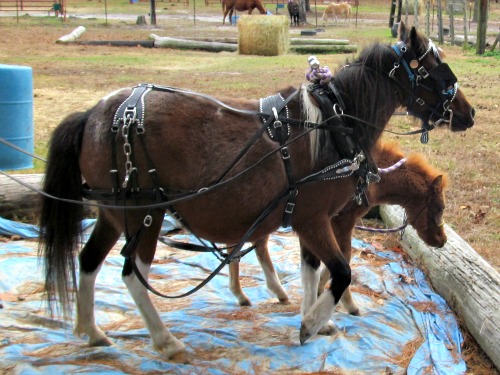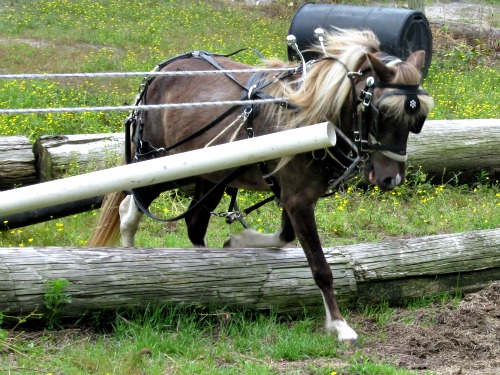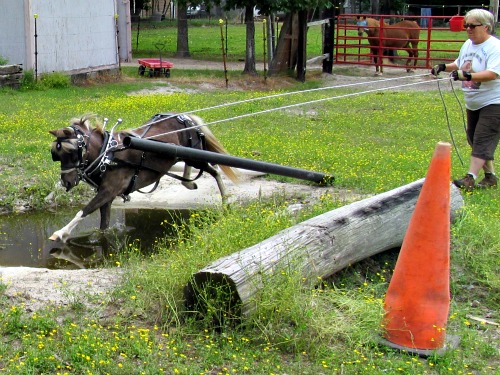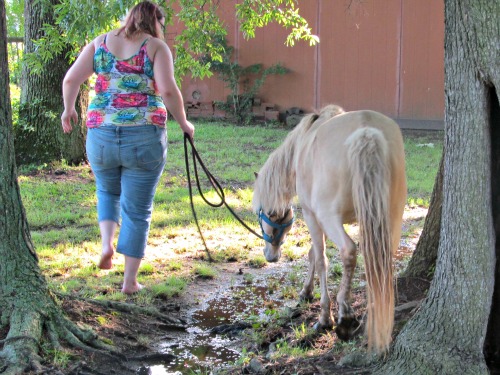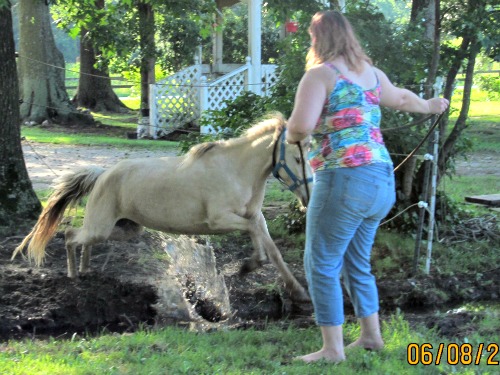I've never set up a "track system" per say (like the FB page or book show) BUT have actually used that concept for over 30 years. It's called having water at one end of a paddock, hay in several others, the feeders set up in a different area or in the barn completely separate from the pasture/paddocks and salt/loose minerals far away from the water source. The horses will move from one area to the next even in a small paddock - quite a bit - thruout the day just to drink, gather salt and "graze".
I've set up obstacles to work my ponies over while training - trot/canter poles, jumps, barrels to jump & weave, trees down on the ground, trees left standing in various areas rather than removed, tire groupings - all out in various pastures/paddocks. The ponies and horses we've owned often utilize all of these while galloping about - making their wind and legs stronger and their balance better - others will avoid those areas like the plague and have to be worked harder/more to get them into good shape. I can understand putting the "track" around a pasture area that some would not have regular/constant access to - novel concept - just not something I've wanted or been able to implement.
This "pasture/paddock" isn't all that large! Behind the ponies, from one end to the other is only 10 - 16' panels (160'), behind the ponies' butts to the left - along the main road - the pasture is only 6 1/2 (68') panels wide. This paddock was in an "L" shape and it sloped down to the road - a natural workout for the ponies... I want to say that at the top of the "L" at the widest point, it is 15 panels long.
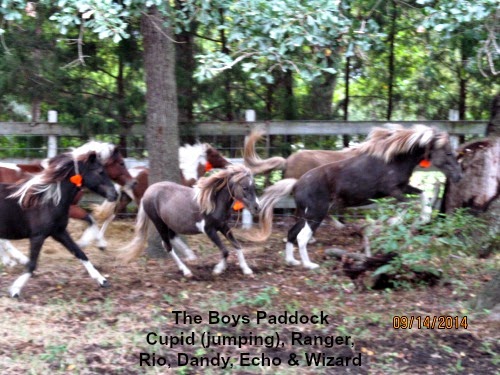
This one shows the left hand corner alongside the road. The trees "mask" the "well" that was an ornament, not a working well. It was both a natural shady spot and worked for blocking rain/snow but also as an obstacle that they ran around while either running/playing for joy or when one took exception to some and madly chased the "snot" out of them... This was Oly's first day back out with ponies he'd been born with and grown up with. He was born in May 2011 and went to TX in April 2012 to be fitted/trained/shown in halter. He lived in a stall from April 2012 thru August 2013 - except when taken out to be groomed/trained/conditioned. Oly is a 2yr old stallion - the others are geldings. Sami, Comet and Rocket are 1/2 shetlands.
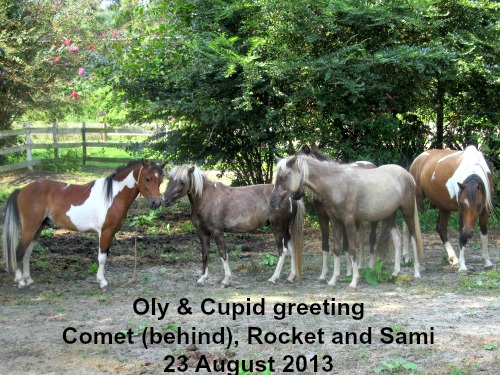
The "track" concept, imo, is set up the way a natural habitat would be for wild horses or for horses on large ranches on open range land. Those animals move all day long and sometimes thruout the nite - grazing, running/playing (yep even the mature horses often gallop about!!), going to water, finding natural salt licks. When I was growing up in CO - most ranchers utilized the concept that pastures and even smaller "paddocks" were set up to keep/make the horses move - to build wind, strengthen legs, develop muscle and to balance out weights (neither too thin nor to heavy). I grew up not only utilizing such myself BUT also reading how it was implemented and is still used by larger horse breeders (several Arab breeders on the west coast use this all the time - water set up at the top of a hill and hay set down below somewhere) - QH, Arab, Morgan, Paint, TB etc... Yes, sometimes the larger ranches/breeders would lose a horse - to natural predators that either the humans hadn't trapped/shot or that showed up and chased (usually didn't catch) the horses (full size), or to getting caught in a "bog"/or quick sand (lot of that on the Platte River in CO! I was caught in some while riding and ponying horses a couple of times - UGLY), snakes or "not keeping their heads" while traversing rocky areas (broken legs leading to death due not to being able to get t water/hay etc). There was a reason cowboys, even those working on horse breeding operations - not just cattle or sheep, "rode fence". It was to keep daily/weekly/monthly monitoring of the horses in the various pastures and to check the condition their weights were at!! Breeders sometimes found that certain lines simply didn't make it out in the open - and those lines were culled both by the rancher/manager themselves or by mother nature. The remaining horses that "bred on" were the better for the "natural selection" and culling.














































